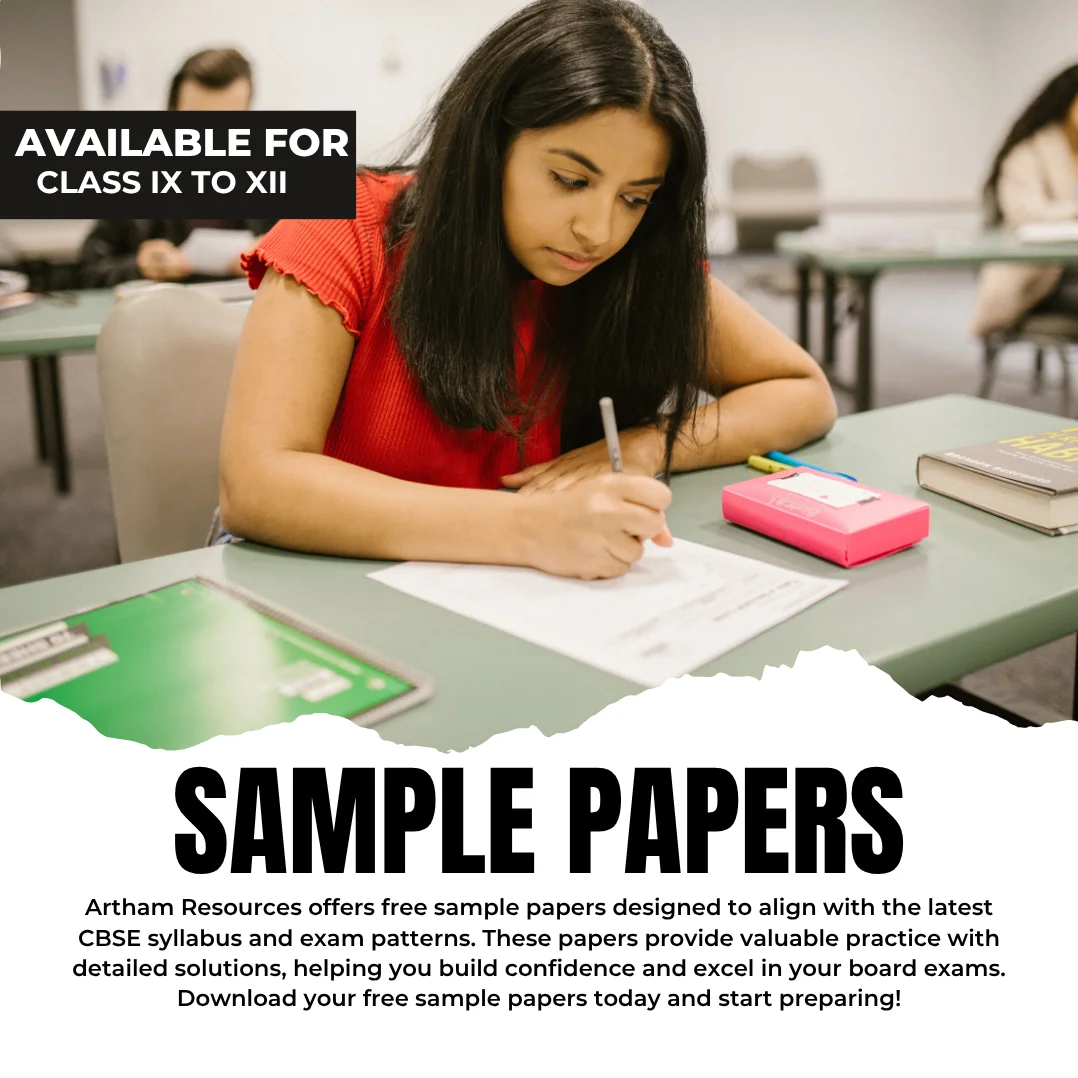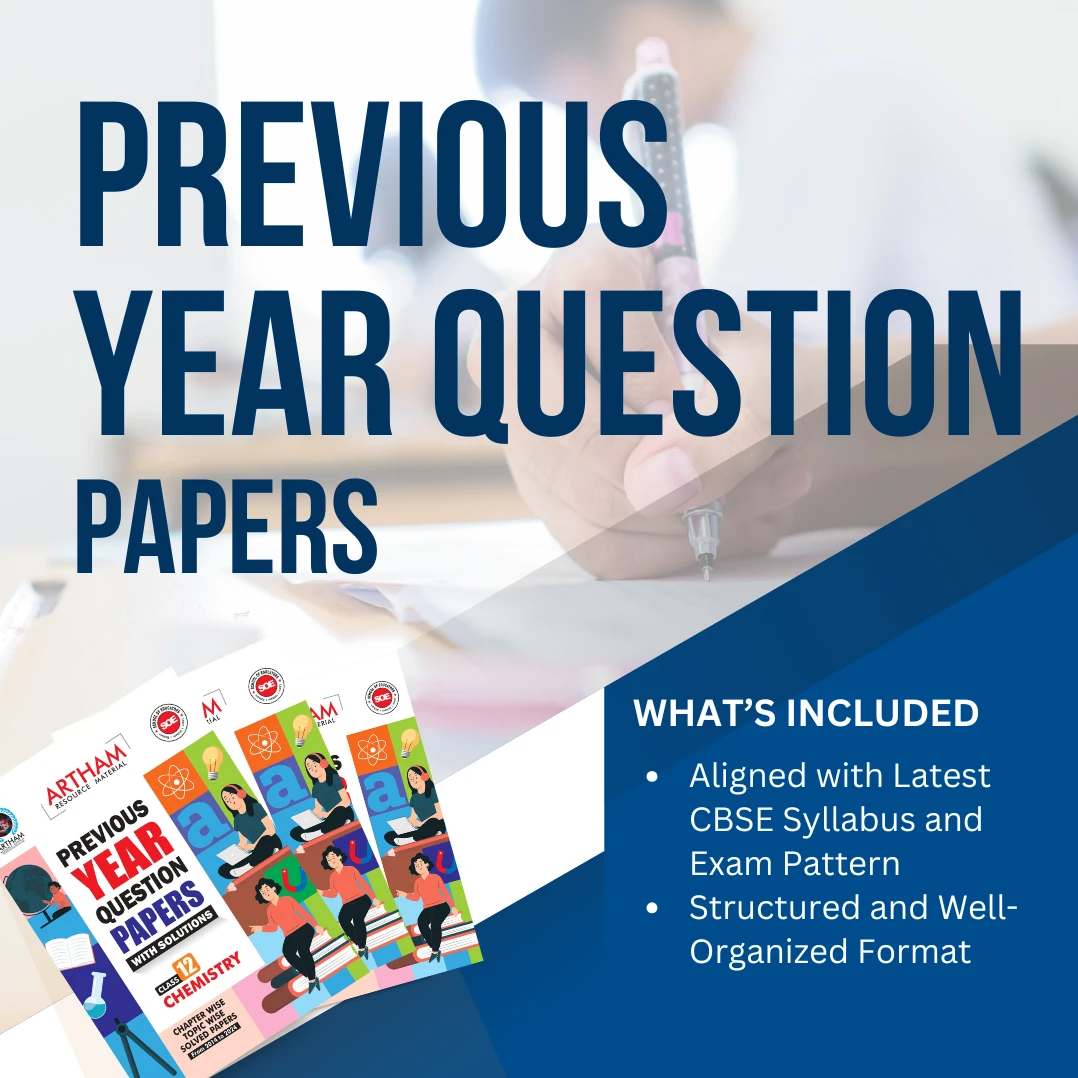Shop Left Sidebar
- CBSE
- Chapter Wise Topic Wise Notes
- Class 10
- Class 9
- Competency-Based Question Bank
- Competitive Exams & Aptitude Tests
- Comprehensive Viva Voice
- Courses
- CUET
- Daily Practice Paper (DPP)
- Diagnostic Assessment
- eBooks
- For New School
- Foundation and Olympiad Study Material
- Gift for Students
- Gift for Teachers
- Half Yearly Sample Question Paper with Solution
- Holiday Homework
- Illustrative Charts
- Journal
- Kindergarten
- Lesson Plan
- Life Skills
- Line by Line Questions
- Mind Maps
- Must Buy
- NCERT Exemplar Solutions
- NCERT Solutions
- Notes
- POWERPOINT PRESENTATIONS
- Pre Launch Stage
- Premium WhatsApp Group
- Previous Year Question Papers
- Previous Year Question Papers with Solutions
- Print version of SOP
- Sample Paper
- Sample Paper with Solutions
- Self Development
- Split -up Syllabus
- Sports and Physical Education
- Standard Operating Manuals
- Study Materials for Students
- Teachers Manual with Lesson Plans
Best seller
-
-100%
₹ 50.00Original price was: ₹ 50.00.₹ 0.00Current price is: ₹ 0.00. -
-100%
₹ 50.00Original price was: ₹ 50.00.₹ 0.00Current price is: ₹ 0.00. -
-100%
₹ 50.00Original price was: ₹ 50.00.₹ 0.00Current price is: ₹ 0.00. -
-100%
₹ 299.00Original price was: ₹ 299.00.₹ 0.00Current price is: ₹ 0.00.
- CBSE
- Chapter Wise Topic Wise Notes
- Class 10
- Class 9
- Competency-Based Question Bank
- Competitive Exams & Aptitude Tests
- Comprehensive Viva Voice
- Courses
- CUET
- Daily Practice Paper (DPP)
- Diagnostic Assessment
- eBooks
- For New School
- Foundation and Olympiad Study Material
- Gift for Students
- Gift for Teachers
- Half Yearly Sample Question Paper with Solution
- Holiday Homework
- Illustrative Charts
- Journal
- Kindergarten
- Lesson Plan
- Life Skills
- Line by Line Questions
- Mind Maps
- Must Buy
- NCERT Exemplar Solutions
- NCERT Solutions
- Notes
- POWERPOINT PRESENTATIONS
- Pre Launch Stage
- Premium WhatsApp Group
- Previous Year Question Papers
- Previous Year Question Papers with Solutions
- Print version of SOP
- Sample Paper
- Sample Paper with Solutions
- Self Development
- Split -up Syllabus
- Sports and Physical Education
- Standard Operating Manuals
- Study Materials for Students
- Teachers Manual with Lesson Plans
Showing 529–544 of 563 results
-
-62%
Lesson Plan Class 7 Science Chapter 5 Body Movements
₹ 50.00Original price was: ₹ 50.00.₹ 19.00Current price is: ₹ 19.00.This lesson plan for Class 7 Science focuses on Chapter 5: Body Movements, aiming to engage students through interactive activities and discussions. The plan includes a brief introduction to the skeletal system and its role in movement, followed by demonstrations of different types of body movements like flexion, extension, and rotation. Practical exercises, such as observing joint movements and their flexibility, are integrated to enhance understanding.
-
-62%
Lesson Plan Class 7 Science Chapter 4 Getting To Know Plants
₹ 50.00Original price was: ₹ 50.00.₹ 19.00Current price is: ₹ 19.00.This lesson plan for Class 7 Science, Chapter 4 focuses on “Getting To Know Plants.” Students will explore the diverse world of plants, learning about their structure, types, and functions. The plan includes activities to identify different parts of plants, understand their adaptations to various environments, and appreciate their role in the ecosystem.
-
-62%
Lesson Plan Class 7 Science Chapter 3 Separation of Substances
₹ 50.00Original price was: ₹ 50.00.₹ 19.00Current price is: ₹ 19.00.In this lesson plan for Class 7 Science, Chapter 3 focuses on the ‘Separation of Substances’. Students will explore various methods such as filtration, evaporation, distillation, and magnetic separation to separate different types of mixtures and substances. The lesson begins with an engaging introduction to the concept of mixtures and the need for separation in daily life scenarios. Through interactive activities and demonstrations, students will understand the principles behind each separation technique and their applications.
-
-62%
Lesson Plan Class 7 Science Chapter 2 Sorting Materials Into Groups
₹ 50.00Original price was: ₹ 50.00.₹ 19.00Current price is: ₹ 19.00.This lesson plan for Class 7 Science, Chapter 2, focuses on ‘Sorting Materials Into Groups’. Students will explore the diverse world of materials, understanding their properties and how they can be categorized based on various criteria such as appearance, texture, and uses. Through hands-on activities and interactive discussions, students will learn the importance of classification in scientific study and everyday life.
-
-62%
Lesson Plan Class 7 Science Chapter 1 Components of Food
₹ 50.00Original price was: ₹ 50.00.₹ 19.00Current price is: ₹ 19.00.This lesson plan for Class 7 Science focuses on Chapter 1, “Components of Food,” aiming to introduce students to the essential nutrients necessary for human health. The plan includes interactive activities to explore the five major food components: carbohydrates, proteins, fats, vitamins, and minerals.
-
-62%
Lesson Plan Class 7 Mathematics Chapter 13 Visualising Solid Shapes
₹ 50.00Original price was: ₹ 50.00.₹ 19.00Current price is: ₹ 19.00.This lesson plan for Class 7 Mathematics focuses on Chapter 13: Visualising Solid Shapes. Students will delve into understanding three-dimensional shapes, their properties, and how to visualize them from different perspectives. The lesson includes interactive activities where students will create models, use virtual tools for exploration, and solve problems related to solid shapes.
-
-62%
Lesson Plan Class 7 Mathematics Chapter 12 Symmetry
₹ 50.00Original price was: ₹ 50.00.₹ 19.00Current price is: ₹ 19.00.This lesson plan for Class 7 Mathematics focuses on Chapter 12: Symmetry. It aims to introduce students to the concept of symmetry through engaging activities and interactive learning methods. The plan includes hands-on exercises where students explore symmetrical shapes, identify lines of symmetry, and understand rotational symmetry. Through group discussions and individual tasks, students will develop their understanding of how symmetry is applied in real-world scenarios, such as in art and nature.
-
-62%
Lesson Plan Class 7 Mathematics Chapter 11 Exponents And Powers
₹ 50.00Original price was: ₹ 50.00.₹ 19.00Current price is: ₹ 19.00.Explore the fascinating world of Exponents and Powers with this comprehensive Class 7 Mathematics lesson plan. Designed to engage students in interactive learning, the plan covers fundamental concepts such as exponents, powers, scientific notation, and their practical applications. Through activities and examples, students will grasp the concept of how exponents simplify calculations and represent repeated multiplication efficiently.
-
-62%
Lesson Plan Class 7 Mathematics Chapter 10 Algebraic Expressions
₹ 50.00Original price was: ₹ 50.00.₹ 19.00Current price is: ₹ 19.00.In this comprehensive lesson plan for Class 7 Mathematics, Chapter 10 focuses on Algebraic Expressions. Students will delve into the fundamentals of algebraic notation, learning to translate verbal phrases into algebraic expressions and vice versa. The plan includes interactive activities to reinforce understanding, such as solving simple equations and identifying coefficients and constants.
-
-62%
Lesson Plan Class 7 Mathematics Chapter 8 Rational Numbers
₹ 50.00Original price was: ₹ 50.00.₹ 19.00Current price is: ₹ 19.00.This lesson plan for Class 7 Mathematics focuses on Chapter 8: Rational Numbers. It aims to introduce students to the concept of rational numbers, their representation on the number line, and operations involving rational numbers such as addition, subtraction, multiplication, and division. The plan includes engaging activities like group discussions to foster understanding, problem-solving exercises to enhance computational skills, and real-life examples to illustrate the relevance of rational numbers in daily life.
-
-62%
Lesson Plan Class 7 Mathematics Chapter 5 Lines And Angles
₹ 50.00Original price was: ₹ 50.00.₹ 19.00Current price is: ₹ 19.00.This lesson plan for Class 7 Mathematics focuses on Chapter 5, Lines And Angles, covering fundamental concepts such as types of angles, properties of parallel lines, and angle relationships. The plan includes interactive activities to engage students in understanding the basics of geometric concepts and their practical applications. It aims to develop students’ skills in measuring angles, identifying angle pairs, and solving problems related to angles formed by transversals.
-
-62%
Lesson Plan Class 7 Mathematics Chapter 2 Fractions And Decimals
₹ 50.00Original price was: ₹ 50.00.₹ 19.00Current price is: ₹ 19.00.This lesson plan for Class 7 Mathematics Chapter 2, focusing on Fractions and Decimals, aims to build a solid foundation in understanding numerical relationships and operations. Students will explore the concepts of fractions, including equivalent fractions and operations with fractions such as addition, subtraction, multiplication, and division.
-
-62%
Lesson Plan Class 7 Mathematics Chapter 1 Integers
₹ 50.00Original price was: ₹ 50.00.₹ 19.00Current price is: ₹ 19.00.Explore the foundational concepts of integers with this comprehensive lesson plan designed for Class 7 Mathematics. This plan introduces students to integers through interactive activities and practical examples, fostering a deep understanding of positive and negative numbers, absolute values, and their applications in real-life scenarios. The lesson includes engaging exercises to reinforce learning, such as integer addition, subtraction, and multiplication.
-
-62%
Lesson Plan Class 6 Mathematics Chapter 12 RATIO AND PROPORTION
₹ 50.00Original price was: ₹ 50.00.₹ 19.00Current price is: ₹ 19.00.This lesson plan covers Chapter 12 of the Class 6 Mathematics curriculum, focusing on “Ratio and Proportion.” The chapter introduces students to the concepts of ratio and proportion, including their definitions, properties, and applications in various contexts.
-
-62%
Lesson Plan Class 6 Mathematics Chapter 11 ALGEBRA
₹ 50.00Original price was: ₹ 50.00.₹ 19.00Current price is: ₹ 19.00.This lesson plan covers Chapter 11 of the Class 6 Mathematics curriculum, focusing on “Algebra.” The chapter introduces students to the basic concepts of algebra, including variables, constants, expressions, and equations.
-
-62%
Lesson Plan Class 6 Mathematics Chapter 10 MENSURATION
₹ 50.00Original price was: ₹ 50.00.₹ 19.00Current price is: ₹ 19.00.This lesson plan covers Chapter 10 of the Class 6 Mathematics curriculum, focusing on “Mensuration.” The chapter introduces students to the concept of mensuration, which deals with the measurement of geometric shapes and figures.
Teaching is one of the hardest and most important jobs in the world. We provide the support that teachers need to transform their subjects into terms that their students will understand.
- Nageen International
- B-162, 4th Floor, DDA Shed, Okhla Industrial Area Phase 1 New Delhi-110020 (India)
- WhatsApp us at +91-95208-11111
- Email: info@educatorsresource.in
- (Monday to Saturday) WhatsApp 24*7
2025 Educator Resources. All Rights Reserved.




